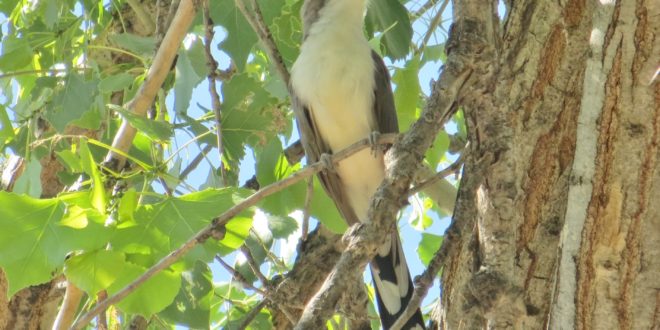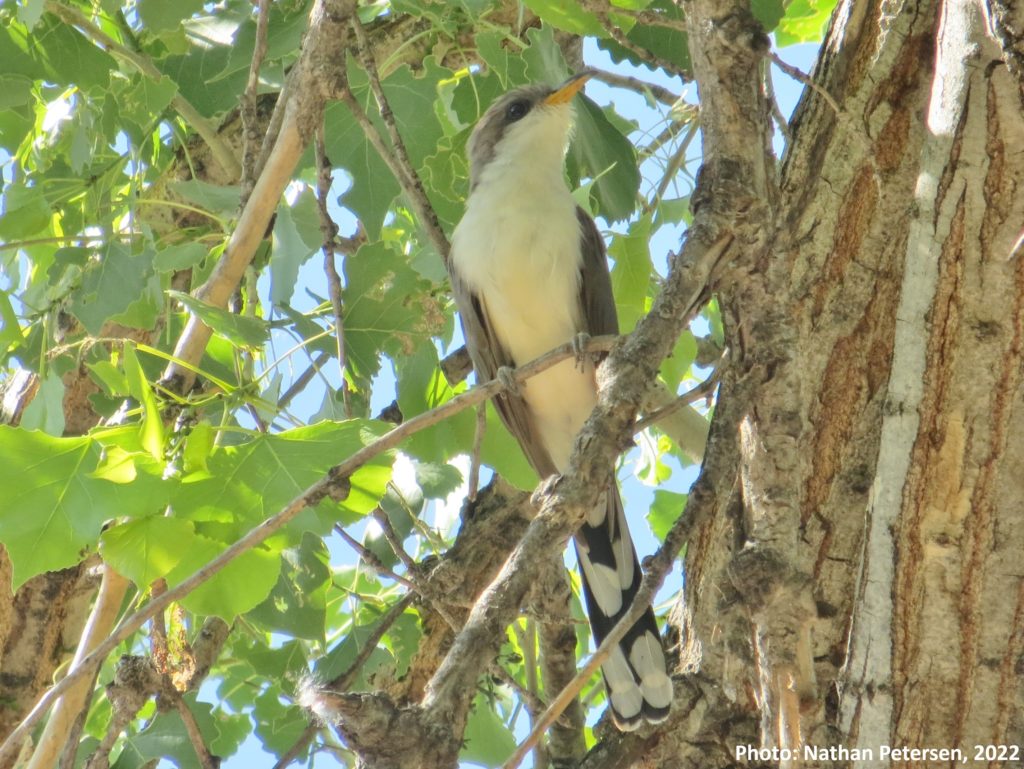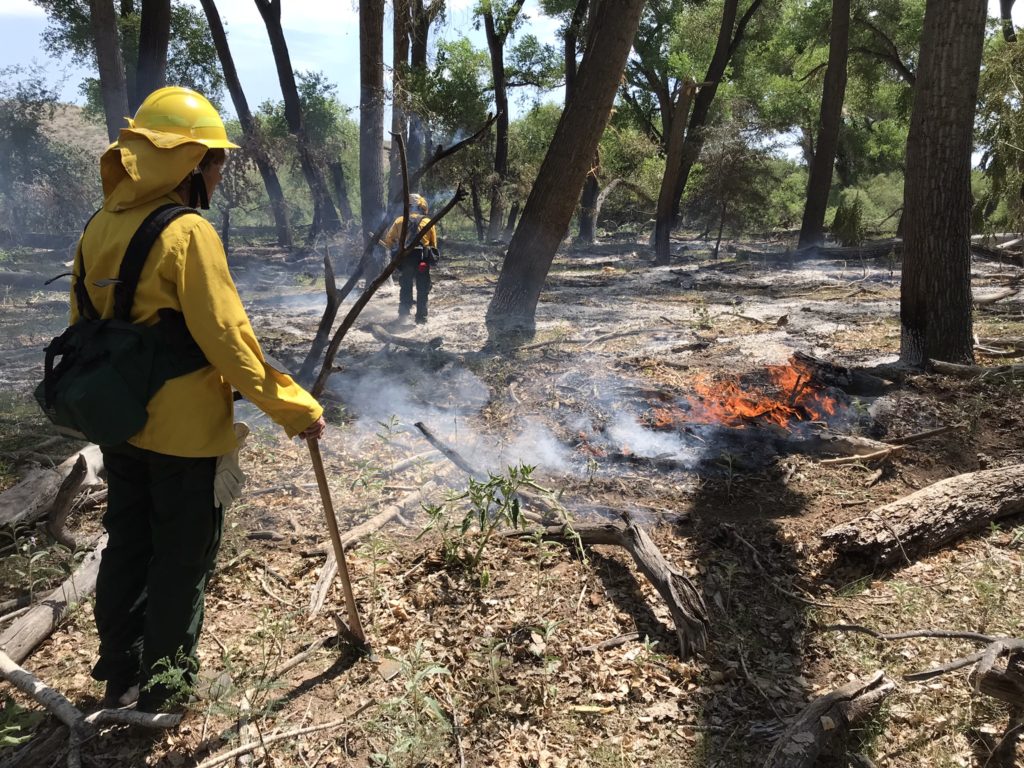Erin Duvuvuei has managed a lot during her conservation efforts. She’s one of our non-game avian biologists who recently participated in a comprehensive survey of yellow-billed cuckoos in eleven western states. The danger she managed to overcome during this survey reflects the startling threats faced by a widespread species.
The yellow-billed cuckoo (Coccyzus americanus) is a member of the cuckoo family (Cuculidae). It’s native to wide swaths of the Americas running from southern Canada to the Carribean. Sometimes it migrates as far south as northern Argentina.
Although of least concern at the federal level, yellow-billed cuckoos are threatened in their western Distinct Population Segment (DPS for short). In 2020, the United States Fish and Wildlife Service expanded their critical habitat to include over 500,000 acres in nine western states, including New Mexico.
In 2022, we worked with ten western states to complete yellow-billed cuckoo range surveys. With that data, we’re developing a species distribution model for conservation and recovery efforts for the western DPS.
Thanks to the Southern Sierra Research Station, we were able to conduct the majority of the survey in areas shared with other states. But our Bird Program Manager Mason Cline worked with Duvuvuei to complete major surveys in our particular regions.
Duvuvuei’s surveys included sites along the Gila River, San Francisco River and Rio Grande. She was excited to ford beautiful riparian areas and make as many cuckoo sightings as possible.
Then she smelled smoke. She looked all around, but couldn’t find the source amidst miles of forest, so she continued her survey.
Nearing the end of her survey, she forded the river again. Just past the cold stream she reached a gallery cottonwood forest or bosque, our local term for forest along a river bank. There, she found the bosque fire.
Ashes lining the tangled deadfalls suggested the worst was over. A land manager must’ve put it out. But Duvuvuei still had to claw up the river bed away from the flames. The dirt was still hot to her touch.
She kept her cool and forded the river and hustled back to her truck. She started driving to a high point with cell service to report the fire. On the way, a fire truck zoomed past her towards the bosque fire.
Lola, Hal, Jake and Sandy from the Tyrone Fire crew were soon joined by the United States Forest Service and New Mexico Forestry Division. They all worked hard in the July heat, made more intense by the fire. Eventually they managed to drown the fire and dig up most of the hot roots. The following morning, it was confirmed that the fire was ignited by a lightning strike.
While she was getting away from the fire, Duvuvuei had barely noticed two yellow-billed cuckoos flying around the other side of the river. She remembered them after the fire was out and worried that they had lost their nest in the fire, or maybe even their chicks.
Ominously, Duvuvuei gained first-hand experience of a major threat to our yellow-billed cuckoos while doing her best to conserve them. Many riparian areas have become overgrown with invasive species like saltcedar and Russian olive. They’ve choked the growth of native species like coyote willow, cottonwood and sycamore. And unlike native species, they are not well-adapted to fire.
Though yellow-billed cuckoos can still use these compromised habitats, bosque fires like the one Duvuvuei stumbled upon are only increasing. These fires decimate entire stretches of forest, leaving nesting areas uninhabitable for years.
But when she returned to the area only two weeks later, Duvuvuei was happy to hear a familiar sound. This time she found the source quickly: that same pair of yellow-billed cuckoos singing in the unburnt branches. Teamwork and perseverance ensured their survival. Duvuvuei hopes that we can restore these habitats so the cuckoo’s call can be heard once again all around New Mexico’s bosques and beyond.
 New Mexico Wildlife magazine Conserving New Mexico's Wildlife for Future Generations
New Mexico Wildlife magazine Conserving New Mexico's Wildlife for Future Generations


